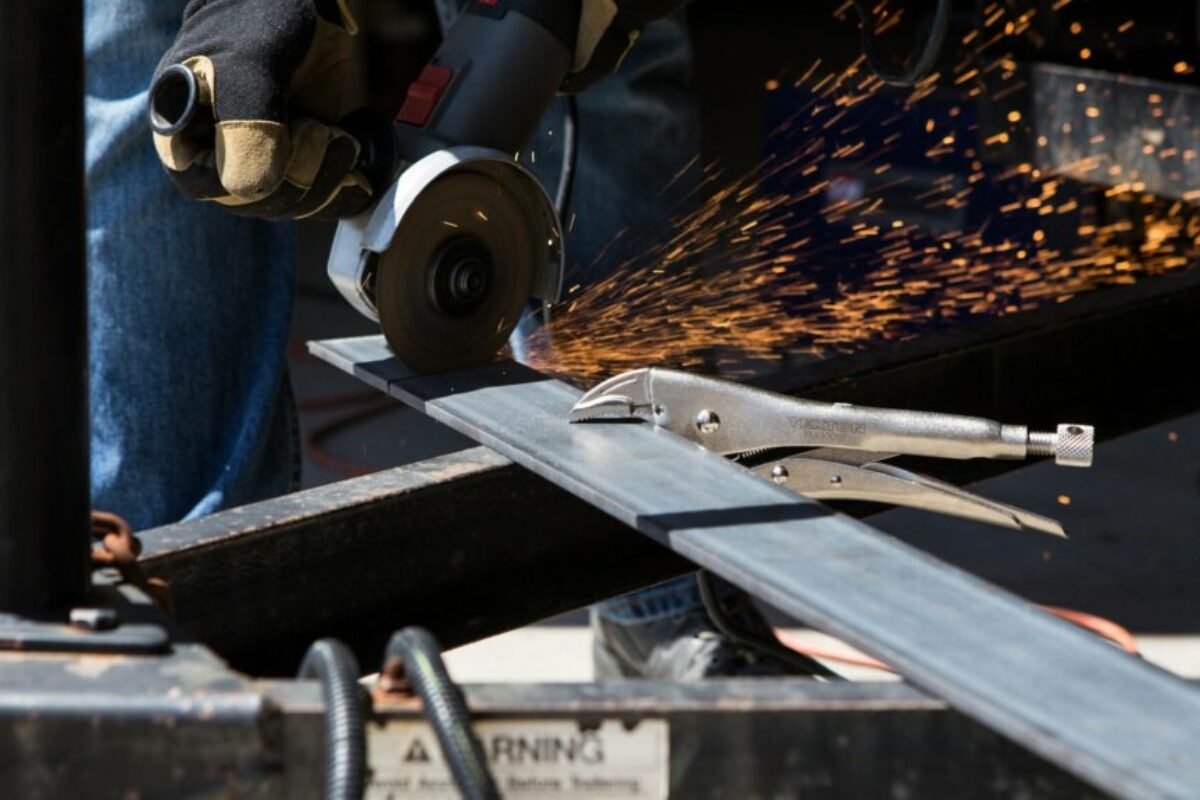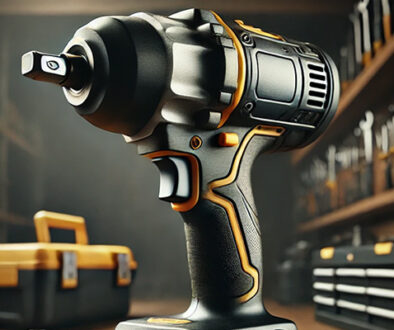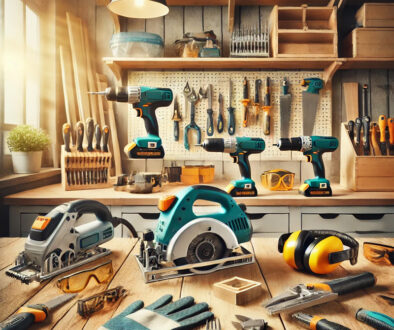Angle Grinder
An angle grinder is a versatile power tool commonly employed in metalworking, construction, and various DIY projects. Specifically, it’s designed for cutting, grinding, polishing, and finishing a wide range of materials, including metal, stone, concrete, and wood.
Components and Design
The angle grinder consists of several key components:
- Motor: Powers the tool, with different models offering varying power levels typically ranging from 500 to 2500 watts.
- Gear Head: Transmits the motor’s power to the spindle, which holds the grinding or cutting disc.
- Spindle: The rotating shaft that attaches to various accessories like grinding wheels or cutting discs.
- Handle: Provides stability and control. Most angle grinders come with a side handle that can be attached to either side for left or right-handed use.
- Guard: A protective cover that shields the user from debris and sparks produced during operation.
Types of Discs and Attachments
The functionality of an angle grinder is largely defined by the type of disc or attachment used:
- Grinding Discs: Used for removing excess material and smoothing rough edges.
- Cutting Discs: Thin, abrasive discs for slicing through metal, stone, or concrete.
- Sanding Discs: For surface preparation and smoothing.
- Wire Brushes: Ideal for rust and paint removal.
- Diamond Blades: Used for cutting through tough materials like tile and stone.
Applications
Angle grinders are extremely versatile, making them suitable for a wide range of applications:
- Metal Fabrication: Cutting and grinding metal pieces, cleaning welds, and shaping metal parts.
- Construction: Cutting concrete, tiles, and bricks; also used for surface leveling and smoothing.
- Automotive Work: Removing rust, cutting through panels, and polishing surfaces.
- Woodworking: While less common, angle grinders can be used for carving and shaping wood when fitted with the appropriate disc.
Advantages
- Versatility: Capable of performing multiple tasks with the right attachments, making it a valuable tool in many trades.
- Power: High power output allows for quick and efficient material removal.
- Portability: Lightweight and handheld, suitable for use in various environments and locations.
Safety Considerations
Safety is crucial when using an angle grinder due to its high-speed operation and potential hazards:
- Personal Protective Equipment (PPE): Always wear safety goggles, gloves, and hearing protection.
- Secure Work Area: Ensure the workpiece is firmly secured to prevent movement during operation.
- Disc Inspection: Check discs for damage or wear before use to prevent accidents.
- Correct Handling: Hold the tool firmly with both hands and maintain a stable stance to control kickback or sudden movements.
Conclusion
The angle grinder is an indispensable tool for anyone involved in metalworking, construction, or DIY projects. Due to its ability to cut, grind, polish, and finish a variety of materials, it has become a staple in workshops and job sites. However, mastering its use involves understanding the different discs and attachments, as well as adhering to safety protocols. Ultimately, with proper care and handling, an angle grinder can significantly enhance productivity and precision in a wide range of tasks, making it a valuable addition to any toolkit.




